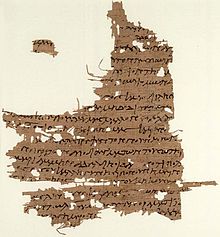I was looking for pictures of the highly reputed English poet Mary Herbert when I stumbled upon the name of another Mary Herbert, i.e. the English countess, Lady Mary Herbert de Powis (1684-1775), who went mining in Spain after emigrating in 1729. She must have been a very adventurous woman with a strong belief in herself to do anything that much out of character for an English noblewomen in the 1800th century. (Actually, that's one of the main reasons why I like her).
The mother of Mary Herbert de Powis
England may not have had a spiritual hold of someone like Mary Herbert de Powis who was brought up a Catholic in Belgium. After all, Catholics were not popular in England anymore, as the special English/Anglican "Protestantism" was the "order of the day". The father of Mary, the Marquess - later Duke - of Powis, had been imprisoned because of his Catholic/Jacobite sympathies, but was later restored to his title and estates. However, religion was the pivotal point of the day and both of the Catholic king James II's daughters by Anne Hyde, the queens Mary and Anne, were brought up as protestants at the order of their uncle, King Charles II, although he himself was a more or less secret Catholic.
Mary's family seat: The impressive Powis Castle in Wales
Anyway, somehow Mary Herbert de Powis attained a contract with the Compania Espanola to work the Pozo Rico silver mine. How she got that idea is a mystery, but she may have been duped by a certain well-known schemer by the name of Abbe Paretti. (That in itself is an interesting story that someone, but not me, might find interesting to dive into ....) Mary's contract with Compania Espanola included draining the mine, and she recruited cheap labour for that, but I think "something" went very wrong from the start as her Spanish adventure included an arrest and law suits when she tried to leave Spain. Before that she had had to sack the Irish lead-miner that her father had found for her as she saw him as totally unsuitable for the job. At the same time she kept refusing to marry her life long suitor, Count Joseph Cage, whom she had assigned as the manager of the mine. Strangely enough there are suggestions that they did marry so what's right? I'm not sure, but somehow they were together for a long time.
Portrait from 1743 of the brother of Count Joseph Cage, Lord Thomas Cage, 1st Viscount Cage
Anyway, Mary and her team succeeded in draining the mine down to level 6, but after some time it was obvious that Compania Espaniola had no intentions of paying her. Something which, of course, lead to various lawsuits. Not until 8 years later she won her case and in all that time she had to stay in Spain, watching how the mine filled with water once again. However, it's obvious from documents that although she won there were still several disagreements about who did what, and who had the rights to do anything. The story of the English noblewoman of the 1800th century who tried her hand at mining in Spain is interesting, but I don't see it is fully solved. Also the case has a postlude of Mary taking part in the Spanish medicine and hat-making industry. At that time the Spanish king Ferdinand VI had robbed her legal rights of the mines and bestowed them on someone else who had claimed that her materials for medicine and hats were inferior to his. Something that seems to have made Mary fume with rage as she ravaged the mine, sacked the workers, and disposed of the horses and mules before handing it over.
Wikipedia
https://www.houseofnames.com/fc.asp?s=noble+family+of+Cage&rw=yes
Mary died in September 1775, aged 89, and was laid to rest at the chapel in the Temple, Paris. The full story of Lady Mary Herbert de Powis is supposedly told in the 120-page biography "The Duchess of Rio Tinto, the story of Mary Herbert and Joseph Gage"




















%20(after)%20%20%20%20%20%20NY_YAG_YORAG_1171-001.jpg)


